The food we eat contains nutrients, which are basically the substances the body needs for its basic functions. Since our bodies don’t synthesize nutrients, we must take them in form of diet. The body uses nutrients to produce energy, move, grow, breathe, detect and respond to the environment, excrete wastes, and reproduce. Food also contains non-nutrients that may be harmful (such as preservatives, cholesterol, and dyes) or beneficial (such as antioxidants).
There are six classes of nutrients that are essential for optimal health and good functioning of the body. These six classes are encompassed in two groups;
- Macronutrients
- Micronutrients
Macronutrients
Macronutrients are the nutrients that the body needs in large quantities. They are the nutrients that give the body energy and help the body maintain its systems and structures. As part of a healthy diet, all four macronutrients should be consumed.
- Carbohydrates
Carbohydrates are molecules made up of carbon, hydrogen, and oxygen. Sources of carbohydrates include grains, some fruits, and starchy vegetables like green bananas and potatoes. Carbohydrates are also found in non-starchy vegetables but in lesser quantities. Carbohydrates are widely subdivided into two forms according to their chemical structure:
- Fast-releasing carbohydrates – We often call these simple sugars as they only have one or two basic units. Simple sugars include glucose (the type of sugar circulating in your blood), and sucrose (the type of sugar we normally use on the breakfast table.
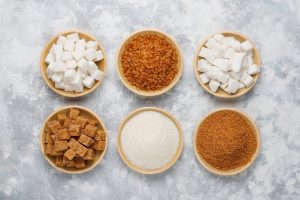
- Slow-releasing carbohydrates – These are long chains of fast-releasing carbohydrates that can be branched or unbranched. During digestion, our bodies break down all slow-releasing carbohydrates into simple sugars, mostly glucose. Glucose is then transferred to all our cells for storage, energy production, or to build macromolecules. Fiber is a slow-releasing carbohydrate that the human body cannot break down and unless it is broken down by the bacteria in the gut, it passes through the digestive tract undigested. For the cells in the body to work;
1 Gram of Carbohydrates = 4 Kilocalories of Energy
In addition to providing energy, carbohydrates also serve as building blocks for bigger macromolecules, aid in the proper functioning of the heart, nervous system, and kidneys. Other examples of slow-releasing carbohydrates are glycogen (in humans) and starches (in plants).
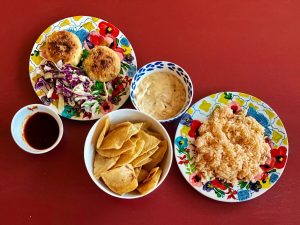
- Lipids
Lipids, just like carbohydrates, are a family of molecules made up of carbon, hydrogen, and oxygen. However, unlike carbohydrates, lipids are insoluble in water. Some predominant sources of lipids are oils, butter, meats, nuts, dairy products, seeds, and many processed foods. Lipids are further classified into three main types;
- Triglycerides (triacylglycerols)
- Phospholipids
- Sterols
The main job of lipids in the body is to store energy. Compared to carbohydrates, lipids provide more energy per gram.
1 Gram of Lipids = 9 Kilocalories
In addition to storing energy, lipids also act as cell membranes, regulate body temperature, surround and protect body organs, and aid in many other functions in the body.
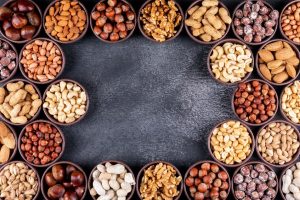
- Proteins
Proteins are macromolecules that are made up of subunit chains called amino acids. Amino acids are simple subunits made up of carbon, oxygen, hydrogen, and nitrogen. Food sources of proteins include meats, seafood, dairy products, and various plant-based foods such as soy. The word “protein” is derived from a Greek word that means “of primary importance”. This describes proteins aptly as they are also colloquially referred to as the “workhorses” of life.
1 Gram of Proteins = 4 Kilocalories of Energy
However, energy provision is not their most important function as proteins mainly provide structure to muscles, bones, and skin, and also conduct most of the body’s chemical reactions. According to scientists, the human body consists of more than 100,000 different proteins.
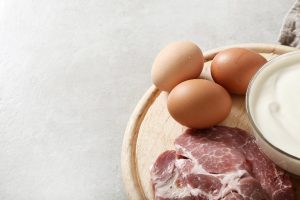
- Water
Water is another major nutrient that the body needs in large amounts. Water, as opposed to the other macronutrients, does not contain carbon but a molecule of it is rather made up of two hydrogens and one oxygen, hence its chemical formula (H2O). More than 60% of the total body weight consists of water. Without it, no chemical processes would happen in the body since nothing could be taken in or out of the body, organs in the body would not be protected, and body temperature would widely fluctuate. On average, from eating and drinking, we consume just over 2 liters of water every day. Did you know that one can survive without food for 3 weeks, without water for 3 days, and without oxygen for 3 minutes? This is according to the “rule of threes” that is highly supported by survival experts.
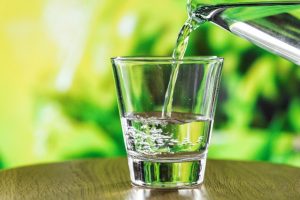
Micronutrients
Micronutrients are the essential nutrients that the body requires in lesser quantities to carry out bodily functions. They include all the essential vitamins and minerals. As opposed to macronutrients which are directly used to make energy, micronutrients aid in the process as being part of enzymes (i.e., they act as coenzymes). Enzymes are proteins that accelerate chemical reactions in the body and are also involved in all body functions from energy production to digestion, to the building of macromolecules. There are sixteen essential minerals and thirteen vitamins.
- Minerals
Minerals are solid inorganic substances that crystallize and are grouped according to the quantity needed in the body. Below are the major functions of minerals.
- Macrominerals – Are required by the body in hundreds of milligrams.
They include;
- Calcium – Responsible for the healthy maintenance of bones and teeth, muscle contraction, nerve transmission, and blood clotting.
- Magnesium – Responsible for protein production, muscle contraction, and nerve transmission.
- Potassium – Aids in fluid balance, nerve transmission, and muscle contraction.
- Sodium – Aids in fluid balance, nerve transmission, and muscle contraction.
- Phosphorus – Supports the healthy maintenance of bones and teeth, and in acid-base balance.
- Chloride – Helps in fluid balance and production of stomach acid.
- Sulfur – Aids in protein production.
- Trace minerals – Are required by the body in just a few milligrams.
They include;
- Molybdenum – Acts as coenzyme.
- Selenium – Is an antioxidant.
- Zinc – Responsible for the production of protein and DNA, growth, healing of wounds, and functioning of the immune system.
- Iron – Carries oxygen in the blood and assists in the production of energy.
- Iodine – Responsible for the production of thyroid hormone, metabolism, and growth.
- Copper – Acts as a coenzyme and aids in iron metabolism.
- Manganese – Serves as a coenzyme.
- Fluoride – Aids in the healthy maintenance of bones and teeth and prevention of tooth decay.
- Chromium – Assists insulin in the metabolism of glucose.
The majority of minerals are vital for enzyme function, while others are used to build bone tissue, maintain fluid balance, synthesize hormones, contract and relax muscles, transmit nerve impulses, and protect the body against harmful free radicals.
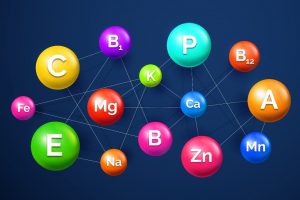
- Vitamins
Vitamins are classified into two; water-soluble vitamins and fat-soluble vitamins. Vitamins are required for many functions in the body including making red blood cells, bone tissue synthesis, and aiding in normal vision, immune and nervous system functions. Below are the vitamins and their major functions.
- Water-soluble vitamins are;
- Vitamin B1 (thiamine) – Serves as a coenzyme and assists in energy metabolism.
- Vitamin B2 (riboflavin) – Acts as a coenzyme and assists in the metabolism of energy.
- Vitamin B3 (niacin) – Serves as a coenzyme and aids in energy metabolism.
- Vitamin B5 (pantothenic acid) – Aids in the metabolism of energy and acts as a coenzyme.
- Vitamin B6 (pyroxidine) – Assists in the synthesis of amino acids and serves as a coenzyme.
- Biotin – Acts as a coenzyme.
- Folate – Acts as a coenzyme and is essential for growth.
- Vitamin B12 (cobalamin) – Serves as a coenzyme and aids in the synthesis of red blood cells.
- Vitamin C – Aids in collagen synthesis and is an antioxidant.
- Fat-soluble vitamins are;
- Vitamin A – Aids in healthy vision, immune system function, and reproduction.
- Vitamin D – Aids in the healthy maintenance of teeth and bones and immune system function.
- Vitamin E – Is an antioxidant and protects cell membranes.
- Vitamin K – Responsible for blood clotting and healthy maintenance of bones and teeth.
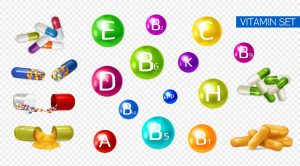
Lack of vitamins can result in severe health problems. For instance, a niacin deficiency causes pellagra whose common signs and symptoms are called the “4D’s — dermatitis, diarrhea, dementia, and death. However, better diets relieve the signs and symptoms of pellagra. Other vitamins also prevent certain diseases such as night blindness which is prevented by vitamin A, scurvy which is prevented by vitamin C, and rickets which is prevented by vitamin D. To learn more about nutrition and dietetics with regard to health, enroll for a course in Human Nutrition & Dietetics today for a 10% discount.







